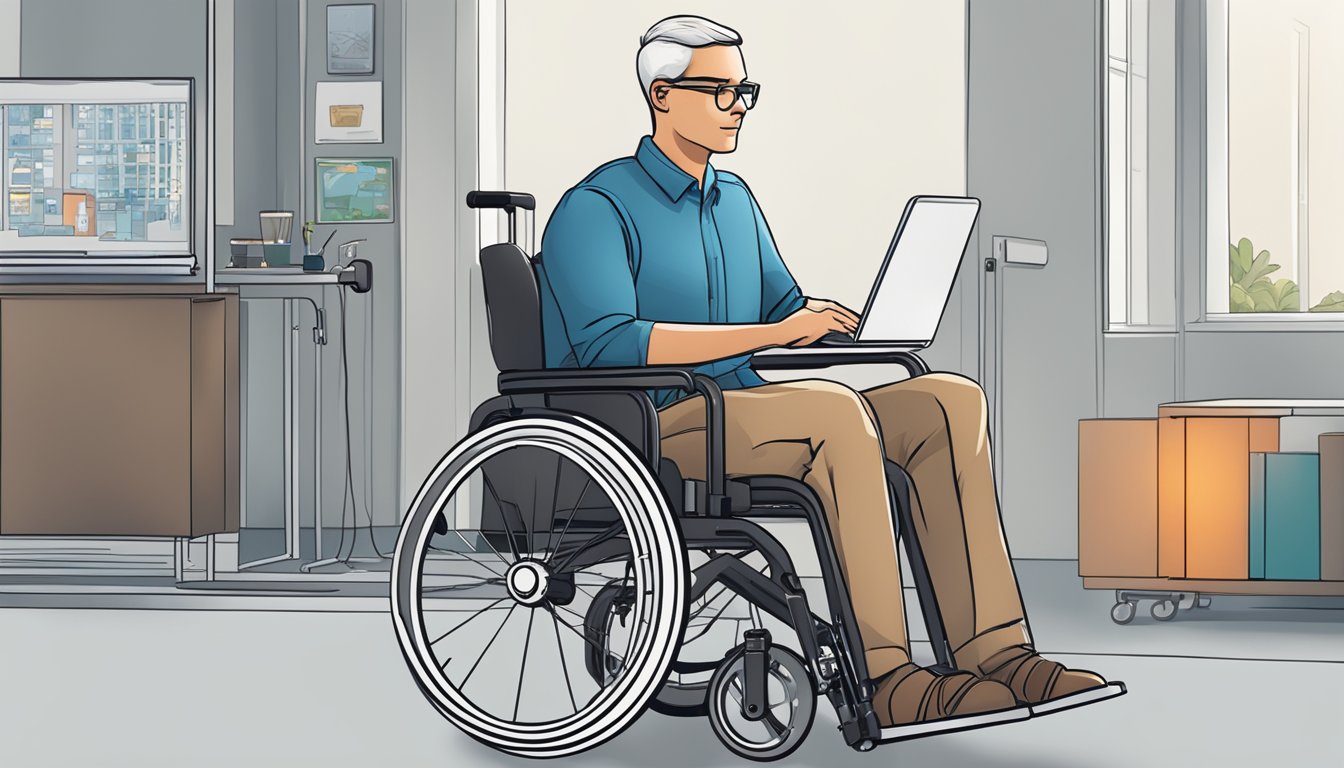Understanding Disability
Understanding disability involves recognizing how various impairments affect individuals’ daily lives and the importance of creating equal opportunities for all.
Definitions and Types
Disability refers to impairments, activity limitations, and participation restrictions.
This can include physical impairments, such as those affecting mobility, sensory functions, or mental health issues impacting cognitive or emotional well-being.
According to the Americans with Disabilities Act, a person with a disability has a physical or mental impairment that substantially limits one or more major life activities.
Types of disabilities encompass intellectual disabilities, where cognitive functions are affected, learning disabilities, and developmental disabilities that manifest during childhood. Mental impairments could include conditions like depression or anxiety, while physical impairments involve body functions such as mobility restrictions.
International Classification and Health Equity
The International Classification of Functioning, Disability and Health (ICF) provides a standard language and framework for describing health and disability.
This classification considers the interaction between health conditions and environmental factors like physical barriers and social attitudes.
Health equity is about ensuring everyone has access to the care they need, including the Convention on the Rights of Persons with Disabilities, which supports disability rights and universal health coverage. Disability inclusion aims at integrating persons with disabilities into all aspects of life, ensuring equal opportunities, and promoting policies that support accessible environments and services.
Disability in Society

People with disabilities face many challenges that affect their daily lives.
These include barriers to access, discrimination, and limited opportunities in education and employment.
Barriers and Discrimination
Individuals with disabilities often face various barriers in society.
These obstacles can be physical, like inaccessible buildings, or attitudinal, like negative stereotypes. Discrimination against people with disabilities is widespread and can impact all areas of life.
For instance, people with disabilities may encounter stigma in healthcare settings, affecting the quality of care they receive.
Additionally, they may experience exclusion from community activities, civic life, and even relationships due to societal prejudices.
Tackling these social challenges is essential for a fairer society.
Education and Employment Access
Access to education is crucial for personal development and employment opportunities.
Yet, many children with disabilities are excluded from mainstream education due to inadequate facilities, lack of trained teachers, or discriminatory attitudes.
In the employment sector, people with disabilities may struggle to find jobs due to employer biases or inaccessible workplaces.
This economic disadvantage often leads to poverty and limits their ability to achieve financial independence.
Public health interventions and support services can help address these barriers, fostering equality in both education and employment.
Social Perspectives and Legal Rights
Social perspectives on disability have shifted over time, yet ableism remains a significant issue.
People with disabilities often face lower expectations and are sometimes viewed as less capable.
To combat this, it is important to promote inclusive language and attitudes.
Legal rights are essential in protecting individuals from discrimination and ensuring equal opportunities.
Laws and policies must reflect the needs and rights of persons with disabilities, including considerations of sex, gender identity, religion, race, and ethnicity.
Initiatives like the Global Report on Health Equity for Persons with Disabilities emphasize the need for equitable health services and highlight ongoing health inequities.
By addressing these areas, society can work towards a more inclusive environment for people with disabilities.
Advances and Resources

Recent advances and resources have significantly improved the lives of individuals with disabilities.
These developments span technology, legislative frameworks, and global health initiatives aimed at inclusion and equity.
Technology and Accommodations
Modern technology has transformed how individuals with disabilities interact with the world.
Assistive devices such as screen readers, hearing aids, and mobility aids are now more advanced and accessible.
For example, screen readers help visually impaired individuals navigate digital content.
In workplaces, ergonomic tools and adaptive software provide necessary accommodations to improve efficiency and comfort.
Smart home technology can also enhance independence.
Voice-activated assistants and automated systems allow users to control their environment easily.
This increased accessibility not only improves quality of life but also enables greater participation in various aspects of daily living.
Legislation and Policies
Legislation like the Americans with Disabilities Act (ADA) has been instrumental in protecting the rights of individuals with disabilities.
The ADA ensures that people with disabilities have equal access to employment, education, and public services.
It requires that buildings and workplaces are ADA-compliant, promoting accessibility and inclusion.
Similarly, the Patient Protection and Affordable Care Act has expanded healthcare coverage and protections for people with disabilities.
These policies ensure that necessary healthcare services and accommodations are widely available, reducing the prevalence of exclusion from education and employment sectors.
Disability and Global Health
Globally, initiatives like the United Nations Disability Inclusion Strategy aim to integrate disability considerations into all aspects of health systems.
This includes improving accessibility to healthcare facilities and incorporating disability into emergency preparedness and response plans.
The World Health Organization highlights that around 16% of the global population experiences significant disability.
Efforts are focused on addressing the barriers that people with disabilities face, such as inaccessible health facilities and limited access to essential healthcare services.
These global strategies work towards sustainable development goals by involving member states and development partners in creating inclusive health policies.






